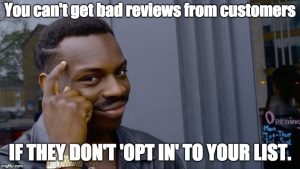
I get it. 2020 was extremely long and an unprecedented year that will change the world forever. Now, we are moving along well in 2021 — but we are still dealing with the explosion of virtual events.
The COVID-19 pandemic launched these virtual platforms into the stratosphere. Take Zoom, as an example, that reported a year ago, April, that it had “300 million daily meeting participants.”
While you’re most likely Zoomed-out, there’s no denying that the technology has come in handy. These platforms have been able to prevent miscommunication, increase engagement, encourage collaboration, and speed up the decision-making process. And, considering that remorse work is here to stay, virtual events will remain the status quo going forward.
But, what happens when things go back to “normal?” Well, according to a Northstar Meetings Group survey, “24 percent of planners said virtual events are the only gatherings they are currently planning, while 35 percent said more than half of their upcoming meetings would be held online.” And we see those stats pretty clearly right now.
As such, expect everything from one-on-ones, team meetings, webinars, and conferences to be virtual throughout the foreseeable future. While these may not be as effective or preferable as in-person events, it’s what we’re currently working with. That doesn’t mean that they have to be horrendously lame if you take the following precautions.
1. Pick the right platform (and make it yours).
If you’re meeting with a handful of your team members, then Zoom, Microsoft Teams, Google Meet, or FaceTime will be just fine. But, what if you’re hosting a webinar or live streaming a training session? You might want to look at other platforms like BigMaker or WebinarJam.
There are dozens of options when it comes to virtual event solutions. The key is to find one that has features that meet your need. Examples would be how many participants and viewers are permitted, price, screen sharing, and event recording.
After pinning down the platform, make it your own. For instance, if you’re permitted, create a custom virtual background or branded event pages.
2. Keep it short and sweet.
Have you ever wondered why TED Talks are under 20-minutes? It’s not because of time restraints; it’s because we have a limited attention span.
Here’s how TED curator Chris Anderson explained put it:
“It [18 minutes] is long enough to be serious and short enough to hold people’s attention. It turns out that this length also works incredibly well online. It’s the length of a coffee break. So, you watch a great talk, and forward the link to two or three people. It can go viral, very easily. The 18-minute length also works much like the way Twitter forces people to be disciplined in what they write. By forcing speakers who are used to going on for 45 minutes to bring it down to 18, you get them to really think about what they want to say. What is the key point they want to communicate? It has a clarifying effect. It brings discipline.”
Just like an effective in-person meeting or keynote speech, the shorter, the better — if you want to keep attendees engaged. Also, ever since COVID emerged, people are spending over 13 hours per day looking at screens! Too much blue light exposure could lead to health concerns like insomnia, so anything to reduce screen time is a plus.
3. Create a human experience in a virtual world.
Like essentially every other event this year — the MIT Sloan CIO Symposium went digital. What resulted was the MIT Sloan CIO Digital Learning Series. The biggest problem, according to Allan Tate, executive chair of the event, was not knowing if the audience would embrace it.
To alleviate his concerns, Tate changed gears. As opposed to a one-day in-person event, it evolved into a five-episode virtual that took place over several months. It was a simple way to keep the audience engaged by putting the human experience front-and-center.
“For a virtual format, I’ve come to prefer smaller panels to give each speaker more time to engage with each other and go into more depth with their answers,” Tate says. “Let the audience observe a good conversation, especially one that is human-centered, no matter what the subject matter is.”
“The human experience is at the core of it all,” he adds. As a result, “this enables the speaker to increase attendee focus while being sensitive to the current global environment around us.”
4. Add accessibility and interactivity.
Most platforms come equipped with interactive features. These usually include polls, annotating, whiteboarding, and Q&A. Other tools, such as Mural, were designed specifically for remote visual collaboration. Using these features ensures that your participants are fully engaged and attentive — they can also be used to gather real-time feedback.
Additionally, consider adding accessibility tools — like adding captions. Besides ensuring that this accommodates everyone, studies have found that this improves engagement with online videos.
5. Make the experience immersive.
Another way to add an interactive element? Incorporate the digital with the physical. For example, you could plan a virtual lunch where you and your team take a virtual field trip to Chicago — just make sure that you send them a proper deep dish, so they feel like they’re in the Windy City.
Other ideas would be hosting a trivia or wine and paint night. You could also plan an Instagram scavenger hunt or building kits for charity. You could also encourage Zoom “coffee” breaks by blocking out 15-minutes following a meeting to follow-up and check-in.
If you want to get to know your team, you could employ team-building exercises. One idea would be similar to MTV “Cribs,” where everyone gives a sneak peek into their homes. Other suggestions would be open mic icebreakers or and games via Houseparty.
6. Turn off “The Brady Bunch.”
Even if it was before your time, you’re probably familiar with the intro to the “Brady Bunch.” No disrespect to Mike, Carol, and their six kids, but no one ways to stare at a tic-tac-toe board-style graphic for the entirety of an event — this is called a multi-dynamic image technique if curious.
While these techniques can be used for short conversations, they spice things up a bit. When delivering content, sprinkle in slides, chat, and round-table conversation. In other words, have an event that is more than just a presentation where attendees are just glaring at smiling faces.
7. Use the element of surprise.
As with planning an in-person event, you want to stick to the agenda. That doesn’t mean you can’t have a little fun every now and then by keeping invitees on their toes. For instance, you could invite a guest speaker to motivate your team or a goat to lighten the mood.
For larger events, maybe like for a fundraiser, you might be able to book a celebrity. Or, you could do something out-of-the-blue like adding a musical element. Ideas could be having your team write a song or jam together or hiring a musician to up the tempo.
8. Simulate live.
What’s the biggest mistake virtual event organizers have been making? Trying to have the whole event live. In fact, Michael Hoffman, the CEO at Gather Voices, says that the Great Virtual Event Hack of 2020 is pre-recording.
While there are some drawbacks, like a lack of authenticity, Hoffman argues that there are benefits. For starters, “it limits the technical challenges, gives the presenters the opportunity to fix mistakes, and allows for editing to do things like add subtitles and graphics that make the whole thing more engaging.”
“Another term for this pre-recorded content is simulated live content,” adds Hoffman. It’s called this since “to your attendees, it’s the same as live.”
“Think about it,” he writes. “How would an attendee know that something wasn’t happening at the moment? And what difference does it make anyway?”
While not all of your events can be pre-recorded, it’s worth exploring. Personally, I think you could take a hybrid approach, like SNL. You could have live sessions with pre-recorded content scattered throughout. Maybe you could create a welcome segment that can be filmed in advance — or you could show an interview that you had previously with an industry leader.
9. Don’t check your etiquette at the door.
Finally, always practice proper virtual event etiquette, such as:
- Double-checking your equipment before the event is scheduled to start.
- Preparing your environment, like removing distractions such as turning off your phone.
- Dressing appropriately for the type of event.
- Being punctual and respectful of others by arriving on time.
- Adjusting your camera, lighting, and audio so that others can clearly see and hear you.
- Not fidgeting and looking into the camera.
- Muting your mic when not speaking.
- Not interrupting or talking over others.
- Practicing sharing your screen and sending links.
In the wake of Zoom incidents like those involving Jeffrey Toobin, never, ever, engage in lewd and inappropriate behavior in a remote world.
Image Credit: ekaterina bolovtsova; pexels; thank you!
Business & Finance Articles on Business 2 Community
(54)




